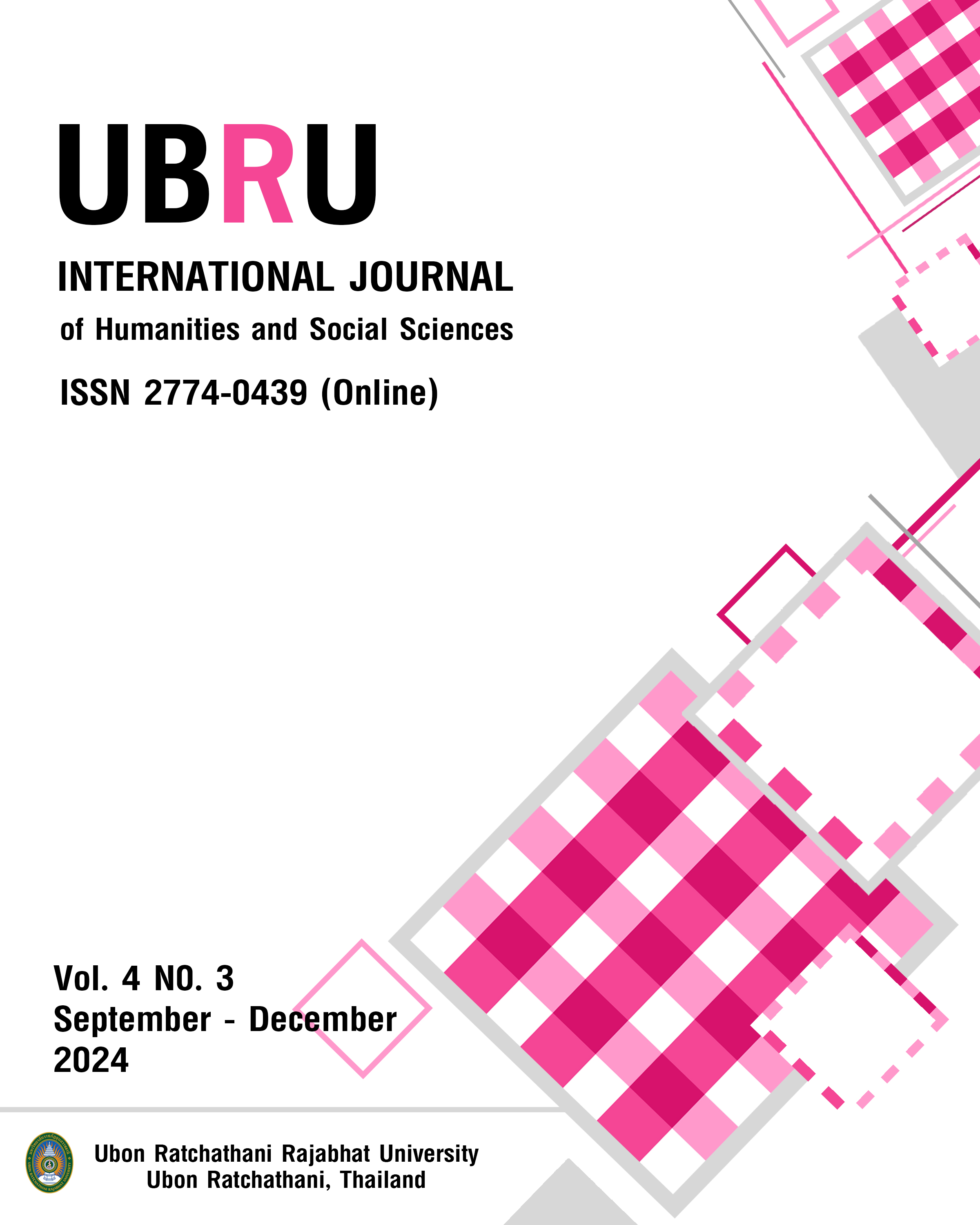Factors Impacting Students’ Behavior Intension to Use Electronic Learning on Higher Education in Shanghai, China
Main Article Content
Abstract
This study evaluates the effects of Performance Expectancy, Effort Expectancy, Social Influence, Hedonic Motivation, Habit, Facilitating Conditions, and Learning Value on Behavioral Intention among students at Shanghai Universities. Employing the Index of Item-Objective Congruence for validity and Cronbach's Alpha for reliability, 100 valid responses were analyzed using multiple linear regression. A subset of 30 students participated in a 14-week Intervention Design Implementation (IDI), with outcomes analyzed using a paired-sample t-test. The findings indicate that all factors affect behavioral intentions, offering critical insights for enhancing e-learning platform design in higher education. This research provides a solid framework for future studies in this field.
Article Details
References
Ain, N., Shaharum, S. M., & Arshad, M. R. M. (2016). The influence of learning value on the relationship between service quality and student satisfaction: A proposed model. International Journal of Innovation, Management and Technology, 7(3), 99-104.
Ajzen, I. (1991). The theory of planned behavior. Organizational Behavior and Human Decision Processes, 50(2), 179-211.
Ali, S., & Arshad, M. (2018). Mobile learning and education: A technology acceptance model approach. International Journal of Advanced Computer Science and Applications, 9(5), 18-27.
Allen, I. E., & Seaman, J. (2014). Grade Change: Tracking Online Education in the United States. Babson Survey Research Group.
Bates, A. T. (2015). Teaching in a Digital Age: Guidelines for Designing Teaching and Learning. Tony Bates Associates Ltd.
Chen, Y., & Wu, X. (2017). Exploring the antecedents of students’ intention to use e-learning platforms: Perspectives from a developing country. International Journal of Information and Education Technology, 7(4), 287-292.
Davis, F. D. (1989). Perceived usefulness, perceived ease of use, and user acceptance of information technology. MIS Quarterly, 13(3), 319-340.
Fernandez, A., et al. (2014). Predicting e-learning adoption in Brazil: A mixed-method approach. Computers & Education, 72, 10-25.
Hamzat, O., & Mabawonku, I. (2018). Adoption of digital library resources and services among undergraduates in selected Nigerian universities. Library Philosophy and Practice (e-journal).
Hu, X., & Lai, C. (2019). Comparing factors that influence learning management systems use on computers and on mobile. Information and Learning Sciences, 120(7/8), 468-488.
Kearsley, G., & Schneiderman, B. (1998). Engagement theory: A framework for technology-based teaching and learning. Educational Technology, 38(5), 20-23.
Li, X., & Li, Y. (2018). The impact of hedonic motivation on the adoption of educational technology among university students in Shanghai. International Journal of Educational Technology in Higher Education, 15(1), 29-44.
Luarn, P., Lin, H. H., & Chiu, Y. P. (2015). Influence of online social networks on people's awareness, perception, and acceptance of weather alerts. Telematics and Informatics, 32(4), 787-798.
Mayer, R. E. (2001). Multimedia Learning. Cambridge University Press.
Moore, M. G. (1989). Editorial: Three types of interaction. American Journal of Distance Education, 3(2), 1-6.
Oreg, S., et al. (2011). The effect of emotions on employees' organizational citizenship behavior. Journal of Applied Psychology, 96(2), 245-259.
Sun, Y., & Zhang, H. (2020). Investigating the factors influencing students’ intention to use online learning platforms: Evidence from Chinese higher education. Computers & Education, 146, 103754.
Tarhini, A., Deh, R. M., Al-Busaidi, K. A., Mohammed, A. B., & Maqableh, M. (2017). Factors influencing students’ adoption of e-learning: A structural equation modeling approach. Journal of International Education in Business, 10(2), 164–182.
These citations follow the APA 7th edition guidelines for referencing various types of sources.
Venkatesh, V., & Davis, F. D. (2000). A theoretical extension of the technology acceptance model: Four longitudinal field studies. Management Science, 46(2), 186-204.
Venkatesh, V., Morris, M. G., Davis, G. B., & Davis, F. D. (2003). User acceptance of information technology: Toward a unified view. MIS Quarterly, 27(3), 425-478.
Venkatesh, V., Thong, J. Y. L., & Xu, X. (2012). Consumer acceptance and use of information technology: Extending the unified theory of acceptance and use of technology. MIS Quarterly, 36(1), 157-178.
Verplanken, B., & Wood, W. (2006). Interventions to break and create consumer habits. Journal of Public Policy & Marketing, 25(1), 90-103.
Vidakis, N., & Charitakis, K. (2018). E-learning: The new tool for higher education. International Journal of Advanced Computer Science and Applications, 9(1), 108-113.
Vroom, V. H. (1964). Work and motivation. John Wiley & Sons.
Zhang, J. (2016). Can MOOCs be interesting to students? An experimental investigation from regulatory focus perspective. Computers & Education, 95, 340-351.


